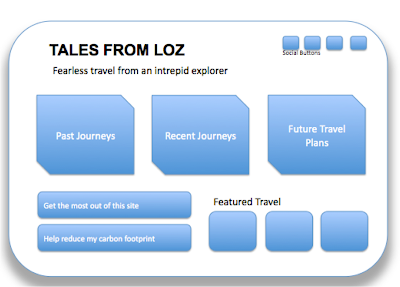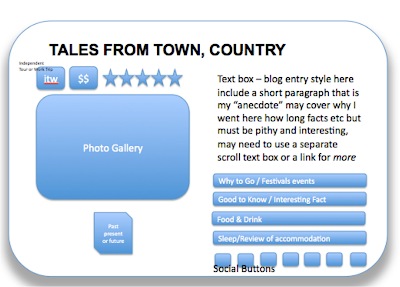So day 1 of my classes in the London Metropolitan
MA Digital Media. My first class is
CMP002N Design for the Internet. Although at first I thought I wanted to stick mostly to the "consultancy" style courses (or "hands off" courses if you like.) I am doing this class for two reasons. 1 - because the course leader,
Elena Moschini advised that even consultants, project managers and sales people should understand what is involved in designing websites for the internet so they can better select the people they work with, and understand when they are being ripped off (EXCELLENT ADVICE!), and 2 - because it fits with the class schedule so I can fit 2 classes on Fridays.
Pat Power is the lecturer and I instantly decided I liked him because he has an Irish accent and all Irish people I have met have been nice. It was only 5 minutes into the class however that I really felt like he was speaking another language!!
Now don't get me wrong, I think I have a fairly large digital footprint for a "classically" trained FMCG Brand Marketer (check out my
Linked In profile), but really he was using acronyms I broadly
only had to understand in the past. Try these. CERN, CSS, W3C, HTML (know that one!), SGML, Usenet, XML, oh and by the way, I have to not only
understand these but
apply them to build a website in DWCS4 by the end of the course. Yikes!
There are about a dozen people in this class who raised their hand when asked if they had ever done web design before. I dislike these people immensely and hope they choose to study another course by next week instead of bringing their fancy pants web design skills to induce further panic about what else I don't know!
50% of the mark will come from a critical report that is meant to be a reflective report about my experience building the site. So, this blog is going to be my attempt to track not just the progress of my project (which lets face it at Wk1 is
already panic stations) but a record of the new things I learn to add to that project every week.
So the website project can't just be any website, the brief specifically states "Conceive, design and produce a website on the theme -
'The Life and Times of [your own name]'." My most and least favourite subject at the same time. I feel a lot of internal conflict building already.
I want this project to be for more than just marks, I want to be able to use it in the future. Will I make it a professional site dedicated to letting the world know about my new consultancy
Digital Stuf Ltd - or will I reveal too much unprofessional-ness (oh God - see!!?) in the process?? Hmmm... maybe I could take the opportunity to scrapbook that 2 years worth of travel I have just done and finally do something with the 10kg box of paper, tickets memories etc under the bed..... but do I have the time for the daunting process of sorting and cataloging all that
and be a consultant
and do this Masters
and have a life???
Well I don't need to decide now.... I do decide however that I will sketch out a few ideas in my notebook, which is a brilliant idea except for that I cant draw and I am looking back at my drawings from yesterday and all I think is WTF???? Now I know what THAT acronym means and I expect we will see it a few times during this course.
That's all for now, writing this has just got me in a tizzy. Its Saturday night and I think I need to do that "have a life part" at least while its still early in the course.

